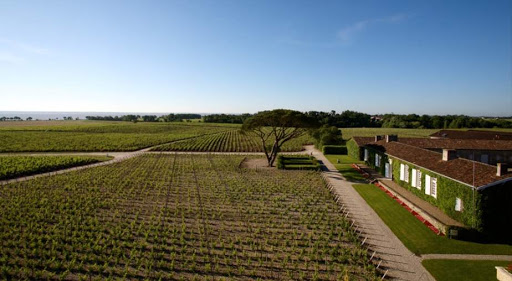Of the great ‘Bordeaux six’, we really only ever really talk about the Bordeaux three: Cabernet Sauvignon, Merlot and to a much lesser-extent, Cabernet Franc. But almost forgotten on the back labels and rarely found in the vineyards of Bordeaux today are the other three permitted red varieties – Malbec, Carmenère and Petit Verdot, which together make up a mere 2% of Bordeaux’s plantings. Malbec and Carmenère have largely moved on from Bordeaux (and have almost disappeared completely from its vineyards), making a better name for themselves in Argentina and Chile respectively, where they are far better suited to the sunny, dry and warm terrains in the New World. But Petit Verdot is seemingly making a bit of a comeback in Bordeaux, as a tasting recently with Château Meyney proved.
Château Meyney has an old massal selection of Petit Verdot made in the 1950s, which is increasingly making a presence in their wines, especially in the face of drier and warmer years, in which Merlot can lose its appeal. As CEO Anne Le Naour explained: “When we started to renew our vineyard in 2004, we took a massal selection of our Petit Verdot as it is an important part of the DNA of the Château and we wanted to keep the potential of the variety. We are looking at the role of Petit Verdot, and also at more Cabernet Sauvignon, in our blends to increase the freshness in the wines, but not to increase the alcohol. Petit Verdot allows us to have the right balance of freshness, whereas Merlot increases in alcohol in warmer years.”
Studying climate change has been a big part of their research and has informed their recent vineyard and winemaking decisions. “Every year we make an analysis of the vineyard soils and leaves, and we have measures going back 30 years. We can see that hydric stress is more and more frequent,” said Anne, who manages the 17th century Meyney estate, as well as the group’s other four properties in Bordeaux. “At the time of picking, we know we have higher alcohol and higher malic acid, which means that you can have a feeling of acidity when you pick the grapes but at the end of the malolactic fermentation the acidity decreases and it doesn’t have the same acidity you had tasted in the vineyard. Petit Verdot, however, keeps this greater freshness.”
Meyney is by no means alone in this approach of increasing Petit Verdot in their blends as climate change begins to bite. There are a handful of estates who’ve been working with the variety more consistently over recent years – with both old vines and new. Château Belle-Vue, for example, now bottles a 100% varietal from their 80-year-old vines; while Couvent des Jacobins, which was originally founded in St Emillion in the 13th century, started grafting Petit Verdot for the first time in 2010. The variety is slowly but steadily gaining ground in Bordeaux, and becoming more present in top blends.
Château Meyney’s latest release, the 2016, does in fact have their highest proportion of Petit Verdot in the blend – with 10%. The sleek, spicy style with floral and graphite notes reflects this greater presence of Petit Verdot, along with the main base of Cabernet Sauvignon which adds to the deep black fruit expression and firm, fine tannins and freshness on the finish. It’s a vintage which is still incredibly youthful and lively today, and will surely age well for decades to come.
Although Petit Verdot is proving its great potential, the balance is still in determining what works best each vintage. “In 2015, the Merlot was also really important to give us this full body, and while it is definitely spicier than 2016, the tannins aren’t at all aggressive,” said Anne. The 2015 vintage was widely lauded by critics but actually in my glass it is 2014, which was not considered as a great a vintage in Bordeaux, which really sings in its poise and precision. “2014 was not known in Bordeaux as ‘the vintage’, but it was in St Estephe!” adds Anne. “We had 80 mm less rain than in Pauillac, for example. And so despite the big structure of the wine, we have a creamy character on the mid-palate and it is a truly Meyney wine for me.”
As these wines prove, the Châteaux of Bordeaux will always be determined by their ability to manage and master blends to temper the changes in vintage each year. And in face of the challenges of climate change, it seems as though Petit Verdot is an ideal tool moving forward.

